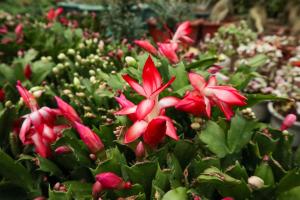Introduction
Jasmine plants are known for their fragrant and beautiful white flowers that bloom throughout the year. However, taking care of jasmine plants requires some attention and care to ensure their healthy growth and blooming. In this article, we will discuss how to take care of jasmine plants.
Light Requirement
Jasmine plants require a minimum of four hours of direct sunlight every day, preferably in the morning. However, they can also thrive in indirect bright light. It is essential to place the plant in a spot where there is no draft or strong winds. If your jasmine plant is not receiving enough light, its leaves may turn yellow, and it may not bloom.
Watering
Jasmine plants require moderate watering, and the soil should be kept moist but not waterlogged. It is recommended to water the plant when the soil is dry to the touch. Overwatering can cause root rot, stunted growth, and eventually, the death of the plant. Similarly, underwatering can cause the leaves to wilt and fall off. It is essential to strike a balance between the two.
Fertilization
Jasmine plants require regular fertilization with a balanced fertilizer during the growing season to promote healthy growth and blooming. It is recommended to fertilize the plant every two to four weeks. However, it is crucial not to over-fertilize, as it can burn the roots of the plant.
Pruning
Pruning is essential to maintain the shape and size of the plant, and it also promotes healthy growth and blooming. It is recommended to prune the plant after blooming to remove dead and diseased branches and to shape the plant. However, it is crucial not to prune too much, as it can delay blooming.
Pests and Diseases
Jasmine plants are susceptible to pests and diseases, such as whiteflies, spider mites, and powdery mildew. It is essential to inspect the plant regularly and treat any infestations or diseases promptly. It is recommended to use natural methods, such as neem oil and soap spray, to avoid harmful chemicals.
Conclusion
In conclusion, taking care of jasmine plants requires attention and care to ensure their healthy growth and blooming. It is essential to provide them with adequate light, water them moderately, fertilize them regularly, prune them, and protect them from pests and diseases. By following these tips, you can enjoy the beautiful and fragrant blooms of your jasmine plant year-round.

 how many times do yo...
how many times do yo... how many planted tre...
how many planted tre... how many pine trees ...
how many pine trees ... how many pecan trees...
how many pecan trees... how many plants comp...
how many plants comp... how many plants can ...
how many plants can ... how many plants and ...
how many plants and ... how many pepper plan...
how many pepper plan...






























